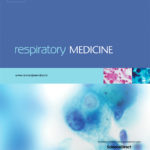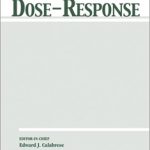Susana Conde Diez, AnaViejo Casas, Juan Luis Garcia Rivero, Juan Carlos Lopez Caro, Felix Ortiz Portal, Gualberto Diaz Saez
Impact of a homeopathic medication on upper respiratory tract infections in COPD patients: Results of an observational, prospective study (EPOXILO)
Resp Med, 2019, 146, 96-105

Background – Chronic obstructive pulmonary disease (COPD) is a progressive lung disorder in which airflow is obstructed. Viral or bacterial upper respiratory tract infections (URTIs) may lead to exacerbations. Homeopathic medication administration to COPD patients during the influenza-exposure period may help to reduce the frequency of common URTIs. Methods – This prospective, observational, multicenter study was carried out in Cantabria, Spain. Patients with COPD were divided into two groups: group 1 received conventional treatment + homeopathic medication (diluted and dynamized extract of duck liver and heart; Boiron) (OG); group 2 received conventional treatment only (CG). The primary endpoint was the number of URTIs between the 4–5 months follow up (mean 4.72 ± 0.96) from basal to last visit. Secondary endpoints included the duration of URTIs, number and duration of COPD exacerbations, use of COPD drugs, changes in quality of life (QoL), compliance, and adverse events (AEs). Results – 219 patients were analyzed (OG = 109, CG = 110). There was a significant reduction in mean number of URTIs during the follow-up period in OG compared to CG (0.514 ± 0.722 vs. 1.037 ± 1.519, respectively; p = 0.014). Logistic regression analysis showed a 3.3-times higher probability of suffering ≥2 URTI episodes in CG (p = 0.003, n = 72). OG patients having ≥1 URTI also had a significant reduction in mean URTI duration per episode (3.57 ± 2.44 days OG vs. 5.22 ± 4.17 days CG; p = 0.012). There was no significant difference in mean number of exacerbations, mean duration of exacerbations, or QoL between OG and CG. There was a greater decrease in proportion of patients using corticosteroids for exacerbations between baseline and visit 2 in OG compared to CG (22.1% vs. 7.5% fewer respectively, p = 0.005). Exacerbator phenotype patients had a significant decrease in number of URTIs (0.54 ± 0.72 vs. 1.31 ± 1.81; p = 0.011), and fewer COPD exacerbations (0.9 ± 1.3 vs. 1.5 ± 1.7; p = 0.037) in OG vs. CG, respectively. Conclusions – Homeopathic medication use during the influenza-exposure period may have a beneficial impact at reducing URTIs’ number and duration in COPD patients and at reducing the number of COPD exacerbations in patients with the exacerbator phenotype. Further studies are needed to confirm the effects observed in this study.








Lascia un commento
Devi essere connesso per inviare un commento.